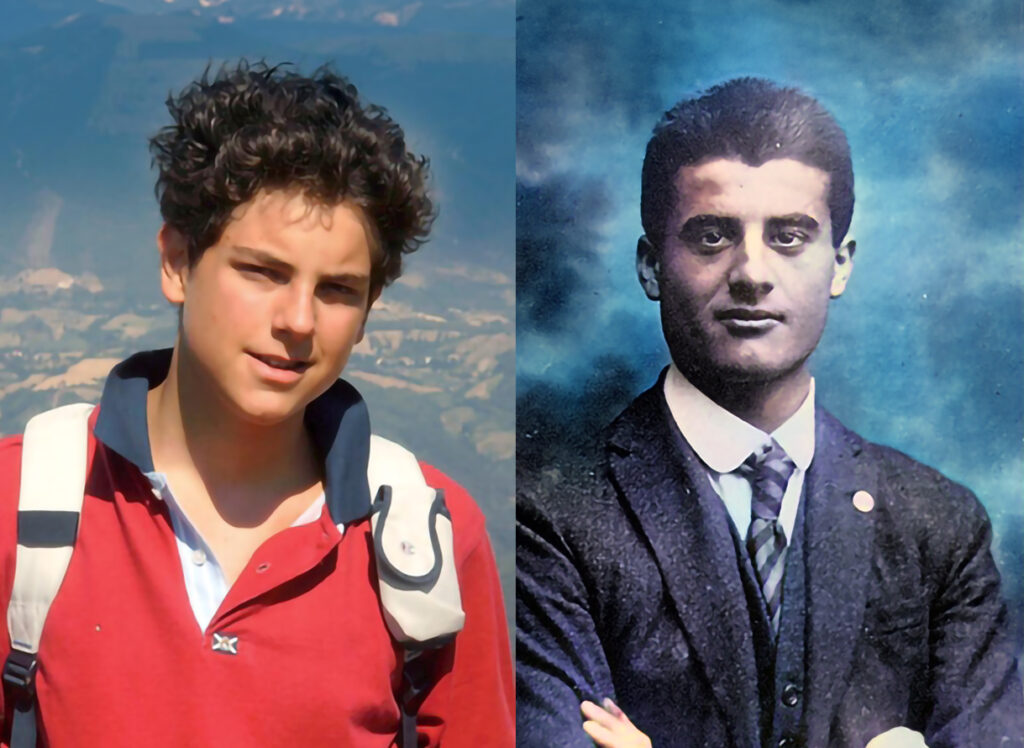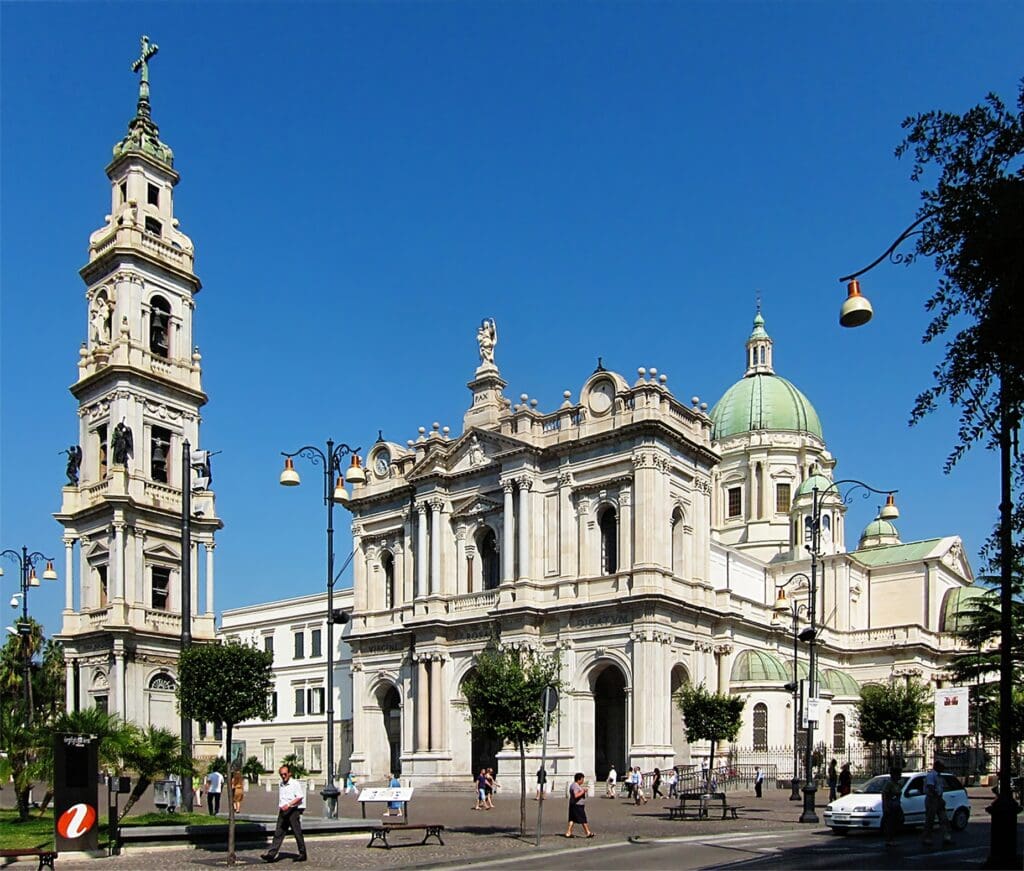Popes give special attention to those they canonize in Jubilee years. The joint canonization of Pier Giorgio Frassati and Carlo Acutis today marks a highlight of Jubilee 2025, and perhaps a high point of Leo’s pontificate.
For the Jubilee 1900, Pope Leo XIII canonized two saints, both with fairly wide popular devotion, Jean-Baptiste de La Salle and Rita of Cascia. Not all canonized saints enjoy a widespread cult; most are relatively unknown. For holy years, popes try to find popular saints.
Venerable Pius XII canonized Maria Goretti in 1950, to whom devotion was so widespread that it was the first canonization held outdoors in St. Peter’s Square, in order to accommodate hundreds of thousands, including the 84-year-old mother of the new saint.
In 1975, St. Paul VI canonized Elizabeth Ann Seton and Oliver Plunkett, successor to St. Patrick. Martyred in 1681, the Archbishop of Armagh and Primate of All Ireland was an even more prominent clergyman than St. John Fisher. Plunkett’s canonization completed the raising to the altars of the martyrs of the English Reformation, to whom Paul VI gave particular attention.
In 2016, during the extraordinary Jubilee of Mercy, Pope Francis canonized Mother Teresa, the 20th century’s exemplar of the works of mercy, as well as José Sánchez del Río, the teenage martyr of the Cristiada in Mexico. The Holy Father also canonized Elizabeth of the Trinity, the Carmelite contemporary of the Little Flower. Hans Urs von Balthasar wrote a book about Thérèse and Elizabeth, Two Sisters in the Spirit, in which he employed the marvelous image that saints are God’s prime numbers.
Pope Pius XI and St. John Paul the Great most extensively decorated the jubilee calendar with prominent canonizations. It may be that 2025 will be considered similar by generations hence.
Pius XI concentrated several major ceremonies into the early summer of 1925: Thérèse of Lisieux, Peter Canisius, Jean-Marie Vianney, and John Eudes, the latter two on the same day. He also beatified the Jesuit Martyrs of North America in June and Korean martyrs in July. These were saints of great renown and thus had the happy ancillary effect of boosting pilgrim numbers in Rome for the jubilee.

John Paul prepared for the Great Jubilee over decades, already mentioning it in the initial paragraphs of his first encyclical in 1979. The program of canonizations was chosen with great care to mark the end of the totalitarian century; he canonized groups of martyrs from both Mexico and China, the latter vehemently protested by the Chinese Communist regime, even though the martyrs predated Mao’s revolution. Those canonizations were meant to highlight the “new martyrs” of the murderous regimes of the concluding century.
He traveled to Fátima – his only jubilee trip outside of Biblical lands – to beatify the child visionaries, Francisco and Jacinta Marto, and to reveal the “third secret,” part of the hidden history of the 20th century. At the centre of it all, he proposed the message of Divine Mercy, the “ultimate limit to evil in the world,” with the canonization of Faustina Kowalska, this “daughter of Poland” who became the “first saint of the third millennium.”
In addition, John Paul canonized Katharine Drexel, an American pioneer in education for racial minorities, and Josephine Bakhita, the former Sudanese slave who now enjoys remarkable prominence as a patroness against the scourge of human trafficking.
In addition to Frassati and Acutis this month, the customary October canonizations include Ignazio Choukrallah Maloyan, Peter To Rot, Vincenza Maria Poloni, Maria del Monte Carmelo Rendiles Martínez, Maria Troncatti, José Gregorio Hernández Cisneros, and Bartolo Longo. A few names stand out.
Peter To Rot, the son of early converts to Catholicism in Papua New Guinea, was a lay catechist. Catechists are key agents of evangelization and catechesis where priests are scarce. He was martyred by the occupying Japanese forces in July 1945, detained and killed for continuing his catechetical work and for preaching against polygamy, which the Japanese were attempting to revive in Papua New Guinea. A defender of Chrisitan marriage, and a resister of tyrannical limits on religious liberty – Peter To Rot is as topical as today’s headlines, and already has a wide following in the younger Churches of Asia and Africa.
The 19th-century lay physician Dr. José Gregorio Hernández Cisneros enjoys wide popular devotion in Venezuela, where he is celebrated even beyond the Catholic faithful. Known as the “doctor of the poor” for his provision of medical care to the indigent, he was a man of scholarship as well, teaching in university hospitals and animated by his Catholic faith. He was a Third Order Franciscan. Especially close to the sick during the great influenza pandemic of 1918, he died in 1919, ironically, hit by one of the few ambulances of the time. He remains one of Venezuela’s national heroes, even as the Maduro regime has turned against the Venezuelan people and the Church. A man of faith and science, a holy doctor when the medical profession is under tremendous pressure from the culture of death, Dr. José Gregorio is a very much a saint for 2025.
Bartolo Longo was the son of a devout physician, but drifted away from the faith when he went to university in Naples. More than drifted – he embraced satanic worship and was “ordained” as a satanic priest. Satanism brought Bartolo to the depths of mental distress, such that he renounced it, returned to the Catholic faith and became a Third Order Dominican in 1871. John Paul called him the “Apostle of the Rosary” at his beatification in 1980 – he and his wife would lead the building of a new church at Pompeii, now the Basilica of Our Lady of the Most Holy Rosary of Pompeii. Pope Leo XIV will thus canonize the saint most associated with that shrine, after invoking Our Lady of Pompeii at his first appearance on the loggia of St. Peter’s after his election on 8 May 2025, her feast day under that title.
Satanism and the occult are booming, the flipside of the happy stories in the Catholic press about increasing numbers of adult converts and vibrant campus ministries. A convert from Satanism is more needed now than in Bartolo Longo’s own time. And he is a saint of pilgrimage, father of a sort to the shrine at Pompeii, when pilgrimages are attractive even to those who are not religious believers (Compostela) and those who very much are (Chartres).
Frassati and Acutis, young men of accessible and attractive holiness, are the headline saints of 2025, but the entire jubilee cohort looks to hold up well for generations hence, as did the jubilee saints of a century ago.











